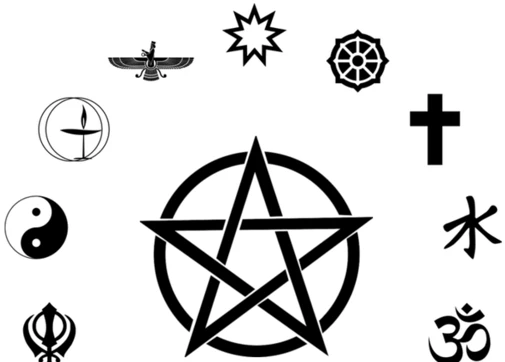The Power of Symbolism has shaped the course of history, permeating every aspect of human culture and expression. From the ancient civilizations to modern times, symbols have communicated profound messages, carried hidden meanings, and evoked strong emotions. Intriguingly, symbols continue to hold immense power in our daily lives, influencing our thoughts, beliefs, and actions. In this article, we will embark on a journey to explore the depth and significance of symbolism throughout history. Unmasking the origins, unraveling the mysteries of ancient civilizations, delving into religious and mythological connotations, and examining the role of symbolism in art, literature, politics, and contemporary culture. Prepare to be captivated by the profound impact that symbols have had on the human psyche and society as a whole.
The Origins of Symbolism

Symbolism has its roots deeply embedded in the evolution of human cognition and consciousness. The journey begins with the emergence of symbolic thought, which allowed early humans to express abstract concepts and communicate complex ideas. As societies developed, they began to create early symbolic representations using various mediums, such as cave paintings, petroglyphs, and man-made objects. These symbols served as a means of communication, storytelling, and spiritual expression, embodying cultural beliefs, rituals, and traditions. The first signs of symbolism can be traced back to shamanic practices, where symbolic images and rituals played a crucial role in connecting with the spiritual realm. Symbolism also found its place in ancient alchemical practices, where symbols were used to represent the transformation of matter and the pursuit of spiritual enlightenment. The study of symbolism in art and architecture further reveals its evolution and significance across different civilizations, highlighting the universal language symbols communicate. Through exploring the origins of symbolism, we can gain a deeper understanding of its profound impact on humanity throughout history.
The Emergence of Symbolic Thought
The emergence of symbolic thought marked a significant turning point in human evolution, revolutionizing the way early humans perceived and communicated their world. It brought forth the ability to represent abstract ideas and concepts through symbols, paving the way for the development of language, art, and civilization as we know it. This cognitive leap allowed humans to transcend mere practicality and engage in abstract thinking, enabling them to communicate complex thoughts, emotions, and spiritual beliefs. The transition to symbolic thought is believed to have occurred around 40,000 years ago, with evidence found in the form of cave paintings, rock art, and personal adornments. These early symbols served as a means of recording experiences, expressing cultural values, and possibly even as a form of early storytelling. Symbolic thought played a crucial role in the development of rituals and spiritual practices, aiding in the communication with supernatural forces and the understanding of the mysterious world around them. It laid the groundwork for the later exploration of symbolic systems, such as the shamanic symbols and ancient alchemical symbols, which took symbolism to deeper levels of interpretation. The emergence of symbolic thought was a defining moment in human history, setting the stage for the rich tapestry of symbols that would shape civilizations to come.
Note: For more information on shamanic symbols, you can refer to the article “The Significance of Shamanic Symbols”.
Early Symbolic Representations
Early symbolic representations mark a significant turning point in human history, as our ancestors began to communicate and express abstract concepts through visual symbols. These early symbols were often found in cave paintings, petroglyphs, and portable objects such as figurines and engraved stones. Such representations served as a means of storytelling, capturing important events, hunting scenes, and spiritual beliefs. In ancient cultures, symbols were used to convey specific meanings and were highly contextual. For example, a certain animal symbol might represent strength and courage in one culture, while symbolizing fertility and abundance in another. These early symbolic representations were deeply rooted in the daily lives of our ancestors, reflecting their connection with nature, their spiritual beliefs, and their understanding of the world around them. As human civilization progressed, the language of symbols continued to evolve and took on new forms in art, architecture, and even alchemical practices. The symbolic motifs and patterns in early art and architecture often carried hidden meanings, reflecting the cultural values and narratives of the society they belonged to. Exploring the rich and diverse world of early symbolic representations provides insight into the complex tapestry of human thought and imagination, as well as lays the foundation for the symbolic evolution seen throughout history. To delve deeper into the symbolism in art and architecture and its role in shaping cultures and societies, you can read more about the evolution of symbolism in art and architecture. Additionally, for a closer examination of ancient alchemical symbols and their symbolic significance, click here.
Symbolism in Ancient Civilizations
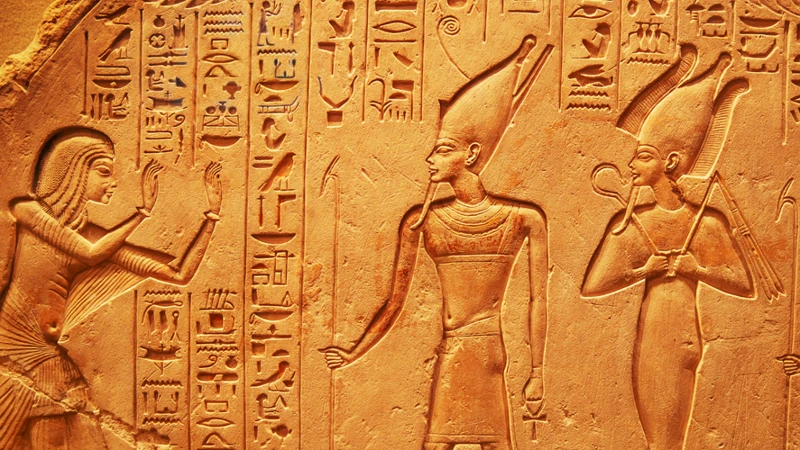
Symbolism played a fundamental role in the belief systems and cultural practices of ancient civilizations. In Egypt, symbols held significant meanings and were intricately woven into every aspect of life. For example, the Ankh symbol represented eternal life, while the Eye of Horus symbolized protection and healing. Greek and Roman civilizations also embraced symbolism, with gods and goddesses representing various aspects of life and nature. The olive branch, for instance, symbolized peace, while the laurel wreath symbolized victory. Mesoamerican civilizations, such as the Mayans and Aztecs, incorporated symbolism into their religious beliefs and rituals. The jaguar, symbolizing power and strength, often appeared in their artwork, and the feathered serpent symbolized a powerful deity. These ancient civilizations recognized the power of symbols to communicate complex ideas and emotions, creating a visual language that transcended time and allowed for a deeper understanding of their cultures and beliefs. Through examining the symbolism in ancient civilizations, we gain insight into the rich tapestry of human history and the profound connection between symbols and the human experience.
Egyptian Symbols and their Meanings
The Egyptian civilization is renowned for its rich symbolism and intricate hieroglyphic writing system. Egyptian symbols were not mere decorations or artistic elements; they held deep meanings and conveyed significant concepts. One of the most iconic symbols of ancient Egypt is the Ankh, often called the “Key of Life” or the “Key of the Nile.” It represents eternal life and is associated with the sun god Ra. The Eye of Horus, another well-known symbol, symbolizes protection, good health, and royal power. It was believed to possess healing and regenerative properties. The Scarab beetle, considered sacred in ancient Egypt, symbolized rebirth, transformation, and protection against evil forces. The Djed pillar, often associated with the god Osiris, represented stability and strength. It was seen as a symbol of resurrection and endurance. The Feather of Ma’at was a symbol of truth, justice, and harmony. It was believed that upon death, one’s heart would be weighed against the Feather of Ma’at during the judgment process. If the heart was lighter, the soul would be granted eternal life. These are just a few examples of the numerous Egyptian symbols and their profound meanings. Each symbol reflects the complex belief system and cultural values that were held in high regard by the ancient Egyptians, offering a glimpse into their spiritual and mythological worldview.
Greek and Roman Symbolism
Greek and Roman symbolism encompassed a rich tapestry of mythological figures, religious beliefs, and cultural ideals. In Ancient Greece, symbolism played a vital role in their art, literature, and architecture. One of the most prominent symbols in Greek mythology is the olive tree, representing peace, wisdom, and victory. The owl, associated with the goddess Athena, symbolized wisdom and knowledge. Greek pottery also featured symbolisms, such as the meander pattern, which symbolized eternity and unity. Roman symbolism, heavily influenced by Greek culture, incorporated gods and goddesses into their art and architecture. The Roman eagle, known as the Aquila, stood as a symbol of power and authority, often depicted on military standards. The laurel wreath, made from the leaves of the bay laurel tree, was a symbol of victory and achievement. Additionally, the fasces, a bundle of rods tied together with an axe, represented authority and justice in Roman society. These symbols not only conveyed specific meanings but also served as reminders of the Greek and Roman values and the stories of their gods and heroes. The impact of Greek and Roman symbolism can still be seen in contemporary societies, influencing art, literature, and even the design of national emblems. It is through the study and appreciation of these symbols that we gain insight into the thought and culture of the ancient Greeks and Romans.
Mesoamerican Symbolism
Mesoamerican Symbolism is a fascinating subject that unveils the rich and complex world of the ancient civilizations of the Americas. The various Mesoamerican cultures, such as the Maya, Aztec, and Olmec, developed a sophisticated system of symbolism that permeated every aspect of their society. One of the key elements of Mesoamerican symbolism was the use of hieroglyphic writing, which combined pictorial representations with symbolic meaning. These hieroglyphs were used to record historical events, religious rituals, and divine prophecies.
The Mesoamericans also used symbolic motifs in their art and architecture. Intricate carvings and murals depicted mythical creatures, deities, and celestial bodies, serving as visual narratives of their cosmology and religious beliefs. The feathered serpent deity, Quetzalcoatl, was a prominent symbol across Mesoamerica, representing the cycle of life, death, and rebirth.
Another significant aspect of Mesoamerican symbolism was the use of calendrical systems. The Maya, in particular, developed an incredibly accurate calendar that incorporated complex symbols to represent time, seasons, and astronomical events. This calendar was integral to their religious ceremonies, agricultural practices, and governance.
Symbols were also used in Mesoamerican rituals and ceremonies. The Aztecs, for example, performed elaborate sacrificial rituals to appease their deities and ensure the continuity of the world. Symbolic elements, such as specific colors, animals, and plants, were carefully chosen to represent different deities and convey specific intentions and meanings.
Mesoamerican symbolism offers a captivating glimpse into the spiritual, cultural, and intellectual world of these ancient civilizations. The intricate and layered symbolism found within their hieroglyphs, art, and rituals provides valuable insights into their complex belief systems and worldview. By delving into Mesoamerican symbolism, we can appreciate the sophistication and depth of thought that defined these remarkable cultures.
Religious and Mythological Symbolism

Religious and mythological symbolism holds a central place in the tapestry of human culture, shaping belief systems and providing frameworks for understanding the spiritual realm. Christianity, for example, is replete with powerful symbols that encapsulate profound meanings. The cross, representative of sacrifice and redemption, is a universal symbol of Christianity. Other symbols, such as the dove, which symbolizes peace and the Holy Spirit, and the fish, which represents Jesus’ disciples, hold deep significance for believers. Similarly, Hinduism and Buddhism incorporate intricate symbolic motifs into their practices and rituals. The lotus flower, for instance, symbolizes purity and enlightenment in both traditions, while the Om symbol represents the fundamental sound of the universe in Hinduism. Mythological symbolism is also intricately intertwined with religious practices. Ancient Greek and Roman mythology abound with symbols, such as the thunderbolt of Zeus, the trident of Poseidon, and the olive branch of Athena, each embodying the essence and power of the gods they represent. Symbolism in religion and mythology serves as a visual language that allows individuals to connect with the divine, convey complex ideas, and pass down cultural wisdom through generations.
Symbolism in Christianity
Symbolism in Christianity holds immense religious and spiritual significance, permeating every aspect of the faith. The use of symbols in Christian practices and belief systems helps to communicate and convey profound theological concepts. One of the most recognizable symbols in Christianity is the cross, which represents the crucifixion and resurrection of Jesus Christ, symbolizing salvation and eternal life. Another prominent symbol is the fish, also known as the Ichthys, which early Christians used as a secret symbol during times of persecution. The dove is a symbol of the Holy Spirit, representing peace, purity, and the presence of God. The use of light, such as candles and the depiction of halos, symbolizes divine illumination and the presence of God’s grace. Colors also carry symbolic meanings in Christianity, with white representing purity, red symbolizing sacrifice and redemption, and purple symbolizing royalty and penance. The Christian sacraments, such as baptism and communion, are deeply symbolic rituals that convey spiritual transformation and the presence of Christ. Symbolism in Christianity serves to deepen believers’ understanding of the divine mysteries, provide visual representations of abstract theological concepts, and evoke a sense of reverence and awe in worship.
Symbolic Motifs in Hinduism and Buddhism
Symbolic motifs in Hinduism and Buddhism are abundant and hold deep spiritual significance. Both religions encompass a rich tapestry of symbols that encapsulate their respective philosophies and teachings. Here, we will explore some of the prominent symbolic motifs in Hinduism and Buddhism:
1. Lotus Flower: The lotus flower is a powerful symbol of purity and spiritual enlightenment. In Hinduism, it is associated with the deities Brahma, Vishnu, and Lakshmi, representing divine beauty and transcendence. Similarly, in Buddhism, the lotus symbolizes the journey from ignorance to awakening, as the flower emerges pristine and unblemished from muddy waters.
2. Om (Aum) Symbol: The sacred syllable “Om” is considered the primordial sound of the universe in Hinduism and is often used as a mantra during meditation. The symbol itself represents the cycle of existence – birth, life, death, and rebirth – and the unity of the physical, mental, and spiritual realms.
3. Wheel of Dharma: This symbol is commonly associated with Buddhism and represents the teachings of Buddha. The wheel, with its eight spokes, symbolizes the Eightfold Path, which leads to spiritual enlightenment and liberation from suffering.
4. Mandala: Mandalas are intricate geometric patterns used as visual aids for meditation and spiritual practices. In Hinduism and Buddhism, mandalas symbolize the universe and are believed to promote a sense of harmony, peace, and spiritual awakening.
5. Swastika: In Hinduism, the swastika is considered an auspicious symbol representing well-being, good luck, and prosperity. It is often used in religious ceremonies and is associated with various deities. However, it is important to note that the swastika’s association with Hinduism predates its unfortunate adoption by the Nazi regime.
These symbolic motifs in Hinduism and Buddhism serve as visual representations of profound concepts, guiding practitioners on their spiritual paths. They invite contemplation, meditation, and an exploration of deeper truths, ultimately leading to enlightenment and inner transformation.
Political Symbolism
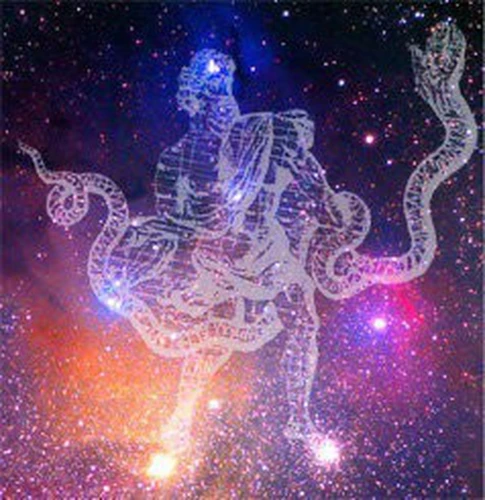
Political Symbolism has long been employed as a powerful tool for conveying ideologies, values, and national identities. One prominent form of political symbolism is found in the creation and representation of national flags. These flags often incorporate colors, symbols, and designs that hold deep meaning and significance for a country and its people. For example, the red, white, and blue of the American flag symbolize courage, purity, and justice, while the stars represent each state in the union. Another form of political symbolism lies in pictorial representations of ideologies. Political cartoons, propaganda posters, and visual campaigns employ symbols to convey political messages, sway public opinion, and ignite patriotic fervor. These symbols are carefully chosen to evoke certain emotions, rally support, or critique political figures or policies. Political symbolism, in both overt and subtle forms, plays a crucial role in shaping public discourse and influencing the political landscape.
Symbolism in National Flags
Symbolism in national flags is a fascinating aspect of cultural identity and patriotism. National flags serve as powerful symbols, representing the values, history, and aspirations of a country. Each element and color in a flag is carefully chosen to convey specific meanings. For example, the colors red, white, and blue are commonly associated with themes of bravery, purity, and loyalty. The design elements, such as stars, stripes, or emblems, often hold historical significance or represent important values. The American flag, for instance, features 50 stars, each symbolizing a state, and 13 stripes commemorating the original colonies. Other flags incorporate animals, plants, or religious symbols that reflect the nation’s heritage and cultural beliefs. The Chinese flag displays a large red field symbolizing the Communist Revolution, while the symbol of the United Kingdom’s flag, the Union Jack, represents the unification of different kingdoms under one sovereign. These symbols and colors in national flags can evoke a sense of national pride and unity, fostering a shared identity among citizens. The study of symbolism in national flags offers a lens into the historical, cultural, and political aspects of a country, showcasing the deep meanings and stories behind these iconic emblems.
Pictorial Representations of Ideologies
Pictorial representations of ideologies have played a crucial role in shaping political movements and propaganda throughout history. Visual symbols and images have the power to convey complex ideas, evoke emotions, and rally support for specific ideologies. One example of the use of pictorial representations is found in political posters and propaganda. These images often feature iconic symbols, such as flags, emblems, or renowned figures, to represent a particular ideology or political party. They are strategically designed to resonate with the viewer and create a strong emotional response. For instance, during World War II, propaganda posters depicting heroic soldiers and patriotic symbols were used to rally public support for the war effort. Another notable example is the use of political cartoons, which utilize illustrations and symbols to critique political leaders, express social commentary, or amplify certain ideological viewpoints. These cartoons often employ caricatures, visual metaphors, and satire to communicate complex ideas in an easily accessible and visually engaging manner. Additionally, pictorial representations of ideologies can be seen in the design and symbolism of national flags, which often incorporate colors, shapes, and symbols that reflect the values, history, and aspirations of a nation. Flags are powerful symbols that evoke a sense of national pride and identity. The visual representation of ideologies through pictures and symbols has proven to be a highly effective way to convey messages, shape public opinion, and mobilize individuals around a common cause. It underscores the profound impact that visual communication and symbolism have on shaping societies and political landscapes.
Symbolism in Art
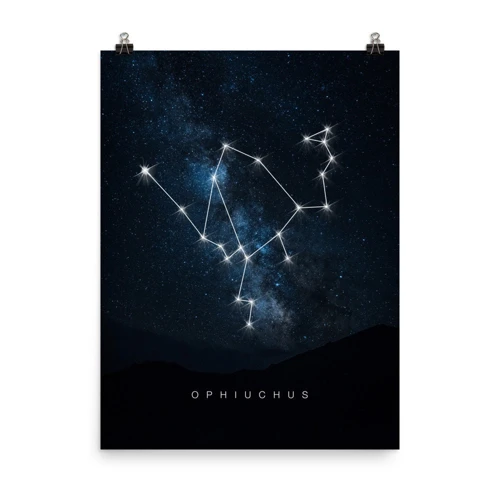
Art has been a powerful medium for expressing symbolism throughout history, transcending language and cultural boundaries. In the Renaissance era, symbolic imagery became prevalent, as artists used hidden meanings and allegorical representations to convey deeper messages in their work. Paintings and sculptures were filled with rich symbolism, inviting viewers to interpret and unravel the layers of meaning embedded within. The Surrealist movement in the 20th century brought forth a new wave of symbolic art, exploring the realms of the subconscious mind and delving into the mysterious and enigmatic. Artists such as Salvador Dalí and René Magritte employed surrealistic symbolism to challenge conventional interpretations of reality and evoke profound emotional responses. Today, contemporary artists continue to utilize symbolism in their creations, using visual elements to convey personal narratives, social commentary, and cultural reflections. The intricate and multi-faceted nature of symbolic art ensures its enduring relevance and captivates audiences with its ability to provoke thought, inspire imagination, and evoke emotional connections.
The Renaissance and Symbolic Imagery
The Renaissance was a period of tremendous artistic and intellectual growth, marked by a renewed interest in the classical world and a shift towards humanism. Symbolic imagery played a central role in the art of this era, allowing artists to convey profound meanings and messages through visual elements. The use of allegory and symbolism became especially prevalent during this time. Artists often employed symbols to represent abstract concepts, virtues, or moral lessons. For example, the depiction of a sunflower could symbolize loyalty, while a broken chain might represent the liberation of the soul. The inclusion of symbols in artworks provided a visual language that could be understood by the educated elite of the time. Paintings and sculptures were rich with symbolic details, providing viewers with layers of meaning to interpret and ponder. Famous works like Botticelli’s “The Birth of Venus” and Michelangelo’s “Creation of Adam” are replete with symbolic imagery that invites contemplation and interpretation. It is in the Renaissance period that artists truly honed their skills in the subtle use of symbols, allowing for deeper exploration of theological, philosophical, and cultural themes. The era’s fascination with symbolism extended beyond the visual arts and into literature and music as well, creating a multidimensional tapestry of symbolic expression. The Renaissance remains an important milestone in the history of symbolic imagery, contributing to its continued fascination and exploration in the centuries that followed.
Symbolism in Surrealist Art
Symbolism in Surrealist Art took the exploration of symbols to new depths, pushing the boundaries of the subconscious and unleashing a world of fantastical imagery. Surrealism, as an artistic movement, emerged in the early 20th century as a response to the rationalism and limitations of the conscious mind. Surrealist artists sought to tap into the power of dreams, fantasies, and the unconscious, using symbolism as a means to liberate creativity and express the complexities of the human psyche. The works of Salvador Dalí, René Magritte, and Max Ernst, among others, are renowned for their use of potent and enigmatic symbols. Through the juxtaposition of unrelated objects, distorted figures, and dreamlike landscapes, Surrealists aimed to challenge conventional reality and unlock hidden meanings. The use of symbolic elements, such as melting clocks, floating objects, and obscured faces, invited viewers to delve into their own subconscious and interpret the symbolic messages embedded within the artwork. Surrealist art, with its emphasis on symbolism and the irrational, continues to captivate audiences, inviting them to explore the depths of their own imagination and questioning the boundaries of reality.
Contemporary Symbolism in Art
Contemporary Symbolism in Art is a vibrant and diverse movement that pushes the boundaries of traditional art forms while maintaining a strong focus on symbolism and metaphorical meaning. In the modern era, artists have continued to explore the power of symbols as a means of expressing complex ideas, emotions, and social commentary. One prominent aspect of contemporary symbolism in art is the use of cultural and societal symbols to challenge and critique prevailing norms and ideologies. Artists often utilize familiar objects or figures and imbue them with new meanings, allowing viewers to engage with the artwork on multiple levels. Another characteristic of contemporary symbolism in art is the incorporation of personal narratives and introspection. Many artists draw inspiration from their own experiences, dreams, and subconscious realms, creating richly symbolic artworks that invite viewers to delve into the depths of their own psyche. The use of symbolism allows for open interpretation and promotes thought-provoking dialogue between the artist, the artwork, and the audience. Technology and globalization have influenced the evolution of contemporary symbolism in art, with artists incorporating digital media, mixed media, and diverse cultural symbols to reflect the complexity of our interconnected world. The fusion of traditional and contemporary symbols often results in visually stunning and intellectually stimulating artworks that challenge conventional artistic conventions. Contemporary symbolism in art continues to evolve and adapt, reflecting the ever-changing nature of society and human expression. By embracing the power of symbols, contemporary artists invite us to explore new perspectives, question social constructs, and engage in meaningful conversations about our world and ourselves.
Symbolism in Literature
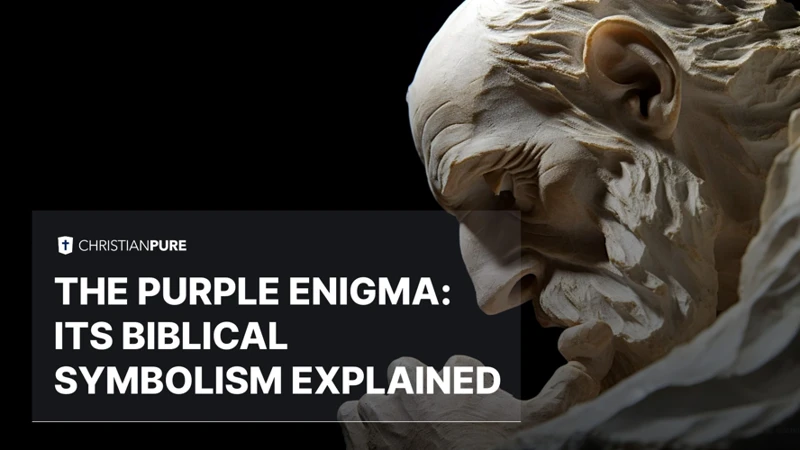
Symbolism in literature is a powerful tool used by writers to convey deeper meanings and evoke emotions within their works. It allows authors to infuse their writing with layers of symbolism, enabling readers to explore themes and concepts beyond the surface level. Hidden meanings and symbolic motifs can be found in classic novels, where objects, settings, and characters are often imbued with symbolic significance. From the enigmatic green light in F. Scott Fitzgerald’s “The Great Gatsby” to the haunting raven in Edgar Allan Poe’s “The Raven,” these symbols add depth and complexity to the narrative. Poetry and prose are also rich in symbolism, where words are carefully chosen to encapsulate abstract ideas and emotions. Symbolism in literature serves as a form of artistic expression, engaging readers in a thought-provoking exploration of the human condition and the intricacies of life. As readers unravel the symbolic layers within literary works, they gain a deeper appreciation for the profound impact that symbols can have on storytelling and the human experience as a whole.
Hidden Meanings in Classic Novels
Hidden meanings in classic novels have fascinated readers for centuries, unraveling layers of symbolism that enrich the literary experience. Authors masterfully weave intricate symbols throughout their works, inviting readers to embark on a journey of discovery and interpretation. In F. Scott Fitzgerald’s “The Great Gatsby,” the green light at the end of Daisy’s dock symbolizes Gatsby’s unattainable dreams and the elusive nature of the American Dream. Nathaniel Hawthorne’s “The Scarlet Letter” explores the symbolism of the letter ‘A,’ which represents not only adultery but also the concept of sin, guilt, and redemption. Herman Melville’s “Moby-Dick” presents the white whale as a symbol of nature’s unfathomable power and the human quest for knowledge and meaning. These hidden meanings serve to deepen the themes and messages of the novels, leaving lasting impressions on readers’ minds. They encourage readers to analyze characters, settings, and events with a critical eye, peeling back the layers to uncover the profound symbolism within classic literature.
Symbols in Poetry and Prose
Symbols in Poetry and Prose
Symbols have long been used in poetry and prose to convey deeper meanings and evoke powerful emotions. Poets and writers employ a range of literary devices, with symbol being one of the most potent and versatile. Through the careful selection and manipulation of symbols, writers can imbue their works with layers of meaning, inviting readers to explore different interpretations and delve into the complexities of human experience.
In poetry, symbols often take the form of objects, animals, or natural elements that represent abstract ideas or emotions. For example, a red rose might symbolize love or passion, while a dove could symbolize peace or purity. By incorporating symbols into their poetry, writers can create vivid and evocative imagery, tapping into the readers’ imagination and eliciting a deeper emotional response.
Similarly, in prose, symbols are used to convey hidden meanings and provide deeper insights into characters, themes, or events. Authors may use recurring symbols throughout a novel to create a sense of unity and continuity. For instance, a specific color that reappears throughout the story could symbolize a recurring theme or motif. The symbolism adds depth and complexity to the narrative, allowing readers to engage with the story on multiple levels.
It is crucial to note that the interpretation of symbols in poetry and prose may vary from reader to reader. A symbol that holds personal significance for one individual may evoke different emotions or associations for another. This open-endedness invites readers to actively participate in the meaning-making process, as they bring their own experiences and perspectives to the interpretation of the text.
The use of symbols in poetry and prose transcends cultural and linguistic boundaries, making them a universal tool for expression and communication. They have the power to evoke emotions, challenge societal norms, and transcend the limitations of language. By exploring the rich tapestry of symbols in poetry and prose, readers can unlock hidden meanings and embark on a journey of self-discovery and understanding.
Symbolism in Modern Culture

Symbolism continues to thrive in modern culture, infiltrating various aspects of our daily lives. One prominent area where symbolism holds great power is in advertising and branding. Companies strategically incorporate symbols and logos to convey their brand identity, values, and messaging, aiming to evoke specific emotions and associations in consumers. Additionally, symbolism plays a significant role in the world of entertainment. Films and TV shows often utilize symbolic imagery, colors, and motifs to deepen the storytelling and create layers of meaning. From the iconic red roses of “The Bachelor” symbolizing romance to the recurring motifs of masks in “The Phantom of the Opera” representing hidden identities, symbolism enhances the viewing experience and prompts audience engagement. Symbolism in modern culture reflects the enduring impact and relevance of this powerful form of communication in shaping our perceptions and influencing our behavior.
Symbolic Advertising and Branding
In the world of marketing and consumer culture, symbolic advertising and branding play a pivotal role in shaping consumer perceptions and fostering brand loyalty. Symbolic advertising relies on the power of symbols to create meaningful connections between brands and consumers. Companies strategically use symbols, logos, and visual elements to convey a deeper meaning or association with desired qualities and values. By tapping into the subconscious desires and aspirations of consumers, symbolic advertising aims to evoke emotions, establish identity, and create a sense of belonging. For example, iconic logos like the Nike swoosh or the Apple symbol not only represent the respective brands but also carry symbolic meanings of excellence, innovation, and lifestyle. Symbolic advertising often incorporates cultural, societal, and historical symbols to resonate with specific target audiences. By aligning their brands with familiar symbols or archetypes, companies can create a sense of familiarity, trust, and authenticity. Symbolic branding goes beyond visual elements and extends to brand storytelling, using narratives and storytelling techniques to imbue brands with symbolic meaning. Successful symbolic advertising and branding can have a lasting impact on consumer behavior, influencing purchasing decisions and fostering brand loyalty in a highly competitive market. Whether through the use of visual symbols, narratives, or archetypal associations, symbolic advertising and branding wield their power to create a profound connection between brands and consumers.
Symbolism in Films and TV Shows
Symbolism in films and TV shows serves as a powerful storytelling technique, adding depth and richness to the visual narratives. Directors and screenwriters employ various symbols to convey hidden meanings, evoke emotions, and provoke thought. These symbols can manifest in different forms, including objects, colors, sounds, and even specific recurring motifs. The use of symbolism in cinema allows for a more nuanced and layered storytelling experience, appealing to both the conscious and subconscious minds of the audience.
In films, symbols can be used to represent themes, character traits, or overarching concepts. For example, a recurring symbol of a bird in a movie might symbolize freedom or liberation. The color red might be used symbolically to represent passion, danger, or even violence. Objects such as a key or a mirror could symbolize self-discovery or reflection. These symbols are carefully placed throughout the film to enhance the narrative and engage the audience on a deeper level.
In TV shows, symbolism can be used to create a sense of continuity or to convey hidden messages. For instance, a repetitive image or symbol that appears in different episodes might serve as a metaphor for a character’s journey or an underlying theme in the show. Similarly, symbolic use of colors can be seen in TV series, where specific hues may be used to represent certain emotions or moods associated with a particular character or storyline.
One example of symbolism in television is the critically acclaimed series “Lost.” Throughout the show, various symbols such as the numbers 4, 8, 15, 16, 23, and 42, as well as recurring images of black and white, are woven into the narrative, leaving viewers intrigued and speculating about their meaning.
By incorporating symbolism, filmmakers and TV show creators create a visual language that transcends dialogue and enhances the storytelling experience. These symbols invite viewers to interpret and engage with the content in a more profound and personal way. Whether it is a subtle allusion or a prominent symbol, the use of symbolism in films and TV shows adds an extra layer of complexity and intrigue, leaving a lasting impression on the audience.
The Psychological Impact of Symbols
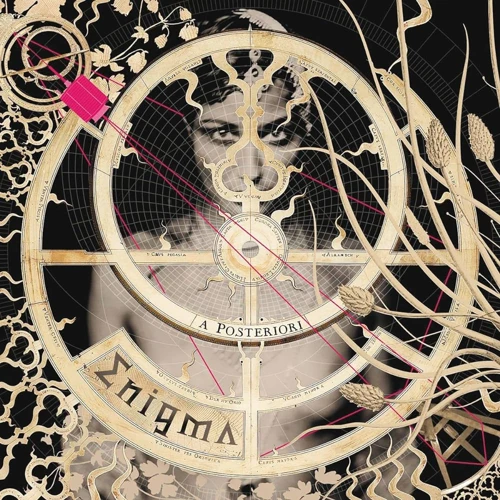
Symbols have a profound psychological impact on individuals, shaping their thoughts, emotions, and behaviors. Carl Jung, the Swiss psychiatrist, emphasized the significance of symbols and their connection to the collective unconscious. He believed that symbols tap into archetypal patterns and resonate with universal meanings that are inherent to all human beings. The collective unconscious refers to the shared reservoir of experiences, memories, and symbols that reside in the depths of our psyches. Jung argued that symbols serve as a bridge between the conscious and unconscious mind, providing insights into our deepest desires, fears, and aspirations. Symbols have the power to evoke strong emotional responses, triggering memories, and influencing our perception of the world. They can serve as potent catalysts for personal growth, self-exploration, and individuation. The psychological impact of symbols extends beyond individual experiences, as symbols also play a key role in shaping cultural identity and societal norms. By analyzing the psychological impact of symbols, we gain a deeper understanding of ourselves, our collective experiences, and the intricate workings of the human psyche.
Archetypal Symbols and the Collective Unconscious
Archetypal symbols and the collective unconscious are concepts introduced by renowned psychiatrist Carl Jung. According to Jungian psychology, archetypes are universal symbols or patterns that are deeply ingrained in the human psyche, transcending cultural and historical boundaries. These archetypal symbols represent fundamental human experiences, emotions, and motifs that have been passed down through generations. Examples of archetypal symbols include the wise old man, the nurturing mother, the hero, and the trickster. These symbols tap into a collective unconscious, a vast reservoir of shared knowledge and instincts that exists in every individual. The collective unconscious is believed to contain ancient memories, ancestral experiences, and instinctual drives that are inherited from our ancestors. Jung argued that archetypal symbols and the collective unconscious are manifested in dreams, myths, fairy tales, and religious symbols. They serve as a means for the individual to connect with the deeper layers of the human experience and gain insights into their own psyche. Understanding archetypal symbols and the collective unconscious can help individuals uncover their hidden motivations, discover their true selves, and navigate the complexities of life.
Symbols and Personal Identity
Symbols play a significant role in shaping personal identity, as they provide individuals with a means of self-expression and self-identification. Through the use of symbols, people can convey their values, beliefs, and aspirations, allowing others to gain insight into their unique identity. Symbols can be personal, such as tattoos, jewelry, or clothing choices, which serve as outward representations of one’s individuality. These symbols can hold deep personal meaning and serve as a form of self-affirmation. Additionally, symbols can also hold cultural significance and contribute to a person’s sense of belonging and heritage. For example, cultural symbols, such as flags, national emblems, or traditional attire, can act as powerful identifiers, representing one’s connection to a particular culture or community. Symbols can be used to express gender identity or sexual orientation, providing a visual representation of an individual’s personal journey and self-discovery. Symbols have the ability to communicate and reinforce personal identity in a visually powerful and meaningful way, enabling individuals to express their authentic selves and find connection with others who share similar symbols of identity.
Cross-Cultural Symbolism
Cross-cultural symbolism is a fascinating realm that showcases the interconnectedness of human civilizations and the universal language of symbols. Despite the diversity of cultures and societies, certain symbols have transcended geographical boundaries and are found in various cultures, albeit with unique interpretations. Archetypal symbols, such as the sun, moon, and serpent, appear in mythologies and belief systems across different continents, uniting humanity in a tapestry of shared meanings. These symbols often carry similar connotations, such as power, protection, and transformation, regardless of the cultural context in which they are found. However, it is crucial to recognize that while there are symbolic similarities, different societies also possess their own distinct symbolic variations shaped by their history, geography, and beliefs. Exploring cross-cultural symbolism allows us to appreciate the shared human experience while celebrating the rich tapestry of diverse cultural expressions.
Symbolic Similarities Across Cultures
Symbolic Similarities Across Cultures:
Symbolism is a universal language that transcends boundaries and connects diverse cultures. Despite the unique expressions and interpretations of symbols in different societies, there are intriguing symbolic similarities that can be found across various cultures around the world.
1. Animal Symbolism:
– The lion, known for its strength and courage, symbolizes power and royalty in many cultures, such as in ancient Egypt and medieval Europe.
– The serpent, often associated with wisdom and transformation, holds symbolic significance in both ancient Mesopotamian and Mesoamerican cultures.
2. Tree Symbolism:
– The tree serves as a powerful symbol of life and connection to the earth in cultures spanning from Celtic mythology to Native American beliefs.
– The World Tree, found in the mythologies of multiple cultures including Norse mythology and Hinduism, represents the cosmic axis linking different realms.
3. Color Symbolism:
– Red is often associated with passion, vitality, and luck in various cultures, such as Chinese culture and Native American symbolism.
– The color white commonly represents purity and innocence across many cultures, including Western symbolism and Japanese traditions.
4. Sun and Moon Symbolism:
– The sun symbolizes light, life, and divine power in cultures ranging from ancient Egyptian and Aztec civilizations to Norse mythology.
– The moon is often associated with femininity, intuition, and cycles of change in cultures like Greek mythology and Native American folklore.
5. Water Symbolism:
– Water holds deep symbolic meaning in numerous cultures, representing purification, transformation, and renewal. It is revered in spiritual traditions like Hinduism and depicted in ancient Egyptian mythology.
These symbolic similarities across cultures demonstrate the shared human experiences and the universal themes that connect us all. They reveal the innate human desire to express and comprehend the world around us through symbolic representation, highlighting the common threads that unite diverse societies throughout history.
Symbolic Variations in Different Societies
Symbolic variations in different societies showcase the diverse ways in which symbols are interpreted and understood across cultures. Each society develops its own unique set of symbols, influenced by factors such as geography, history, religion, and social dynamics. These symbols can be found in various forms, including clothing, gestures, colors, and rituals. For example, in Eastern cultures, the color red is often associated with luck and prosperity, while in Western cultures, it is commonly linked to passion and power. Similarly, hand gestures can hold different meanings in different societies. While a thumbs-up gesture is seen as a positive sign in many Western countries, it can be considered offensive in some Middle Eastern cultures. Symbols used in religious practices also vary significantly. The lotus flower, for instance, holds great significance in Buddhism as a symbol of purity and enlightenment, while in Hinduism, it represents divinity and the unfolding of spiritual consciousness. The study of symbolic variations in different societies provides valuable insights into the rich tapestry of human culture and the way symbolism is influenced and interpreted through different lenses. Understanding these variations helps foster cultural appreciation and facilitates effective communication across diverse communities.
Conclusion
In conclusion, the power of symbolism has persisted and thrived throughout history, transcending cultural boundaries and impacting various aspects of human existence. From the earliest forms of symbolic thought to the complex symbols found in religious, artistic, and political realms, symbolism has served as a universal language of expression and communication. Symbols have the ability to convey profound meanings, provoke emotions, and connect individuals on both conscious and subconscious levels. They have played a pivotal role in shaping societies, influencing beliefs and ideologies, and sparking creativity in art and literature. Moreover, symbols have the capacity to bridge the gap between different cultures, revealing both the shared and unique aspects of human experience. Furthermore, symbols hold immense power in shaping our personal identities, representing our values, aspirations, and connections to the world around us. The study of symbols not only uncovers fascinating historical insights but also offers valuable glimpses into the human psyche and collective consciousness. Ultimately, exploring the power of symbolism reminds us of the rich tapestry of human culture and the profound impact that symbols continue to have on our lives today.
Frequently Asked Questions
What is symbolism?
Symbolism is the use of symbols to represent ideas, emotions, or abstract concepts. Symbols can be objects, images, or actions that convey deeper meanings beyond their literal interpretation.
Why is symbolism important?
Symbolism allows for the communication of complex ideas and emotions in a concise and powerful manner. It adds depth, richness, and layers of meaning to various forms of expression, including art, literature, religion, and culture.
How did symbolism emerge in human history?
Symbolic thought emerged as a cognitive ability in early humans, allowing them to express abstract concepts and communicate beyond the limitations of direct representation. This development marked a significant shift in human evolution.
What are some examples of early symbolic representations?
Early symbolic representations include cave paintings, petroglyphs, totems, and ritual objects. These artifacts served as means of communication, storytelling, and spiritual expression in ancient cultures.
What is the significance of symbolism in religious and mythological contexts?
Symbols play a crucial role in religious and mythological beliefs as they convey spiritual and metaphysical concepts. They aid in understanding and connecting with higher realms, gods, or divine forces.
How does symbolism manifest in art?
In art, symbolism can be found in various forms, such as the use of specific colors, objects, or visual motifs to convey deeper meanings. Artists employ symbols to evoke emotions, convey narratives, or convey hidden messages.
Can symbolism be found in contemporary culture?
Absolutely. Symbolism continues to hold great significance in contemporary culture. It can be observed in advertising, branding, films, TV shows, and even in the way people express themselves through fashion, tattoos, and personal choices.
What is the psychological impact of symbols?
Symbols have a profound influence on the human psyche. They tap into our collective unconscious, evoke archetypal meanings, and play a role in shaping personal identity, beliefs, and behavior.
Do symbols have a cross-cultural significance?
Yes, symbols often carry universal meanings that transcend cultural boundaries. While specific symbols may have unique interpretations in different societies, there are also many symbols that hold similar connotations across various cultures.
How can one interpret the meaning of symbols?
Interpreting the meaning of symbols can be subjective and contextual. It requires an understanding of cultural, historical, and personal contexts, as well as an exploration of the emotions and ideas that the symbol evokes.

